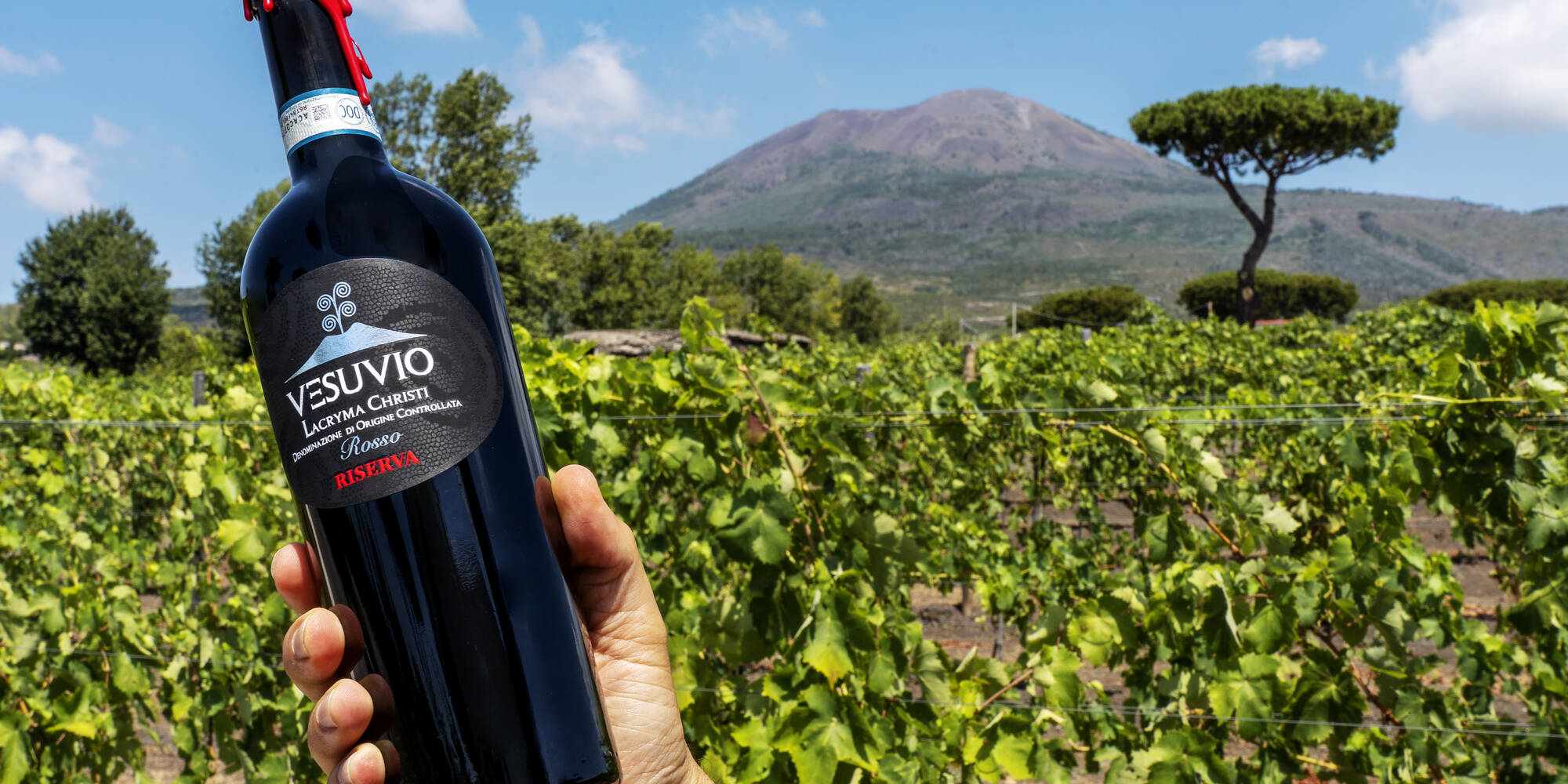
The wine of Vesuvio, as old as history
Vesuvio Lacryma Christi DOC is the wine produced with the native grapes of Mt. Vesuvius, which were already being cultivated prior to ancient Roman times. In fact, the first evidence of grape cultivation on Vesuvius dates back to the 5th century BC.
Buy Vesuvio Lacryma Christi DOCThe vines that climb the slopes of Vesuvius have come down to us directly from the Aminei, an ancient people of the northern Greek region of Thessaly, who brought the vines when they arrived in this area in the 5th century BC. The roots sink into the dark and porous lava soil, rich in minerals, ash, and lapilli. This soil doesn't need irrigation, as it retains moisture and then releases it. Organic manure is used as fertilizer, along with small quantities of sulfur and copper. We plant rose bushes in front of the row of vines, as they are indicators of soil health and the need for any interventions.
We have three different online shops to ensure fast shipping and reduce shipping costs for our customers in Italy/Europe, the UK, and the US. Anyone residing outside of these areas can contact us to organize their shipment.
Buy our organic winesThis is a native vine unique to the area of Vesuvius, whose name Caprettone (literally "big goat") comes from the fact that the grape bunch resembles a goat's beard. For this type of grape we use a pergola cultivation system, which helps protect the vine from the elements. In particular this helps protect from the sun, which can cook this grape's very thin skin. The pergola also helps shade the roots, as the vines don't have an irrigation system. The pergola is a very ancient method that in recent years has become more necessary than ever due to climate change.
In dialect this grape is called Per'e Palummo ("pigeon's foot") because that's what its stem resembles if it is separated from the grapes. This is our winery's main red grape variety and is cultivated with an espalier system. This system helps us obtain the best maturation and therefore a sugar level that allows for optimal fermentation during the winemaking process. We generally use a single and bilateral Guyot training system. We are also experimenting with a sapling cultivation system.
Each year we produce a total of approximately 60,000 bottles across our various varieties of Vesuvio Lacryma Christi wine.

White Vesuvio Lacryma Christi DOC
100% Caprettone, pergola-trained, aged in steel for 6 months and 6 months in the bottle, 12% alcohol content

Red Vesuvio Lacryma Christi DOC Classic
100% Piedirosso, 6 months in steel and 6 months in the bottle, 12.5% alcohol content.

White Superior Vesuvio Lacryma Christi DOC
100% Caprettone, pergola-trained from selected grapes from old vines, aged in steel for 12 months and in the bottle for 6 months, 13.5% alcohol content

Rosé Vesuvio Lacryma Christi DOC
100% Piedirosso from selected old grapes, aged 6 months in steel, 13% alcohol content

Red Superior Vesuvio Lacryma Christi DOC
100% Piedirosso from selected grapes from old vines, aged 12 months in large barrels and 6 months in the bottle, 13.5% alcohol content

Red Riserva Vesuvio Lacryma Christi DOC Wax Seal
80% Piedirosso/20% Aglianico, aged 18/24 months in large barrels and barriques and 12 months in the bottle, 14% alcohol content

Spumante Rosé Extra Dry Capafresca
100% Aglianico, Martinotti method (long Charmat/tank method), 9-12 months of slow refermentation in autoclave, 12% alcohol content

White Passito Pompeiano IGT
50% Caprettone/50% Falanghina, dried for 2 months on racks in the sun then pressed with a winepress
Our winery also produces a limited selection of other products:

Extra-Virgin Olive Oil from Vesuvius
We produce cold-pressed extra-virgin olive oil from our grove of about 700 olive trees comprising 3 different varieties: leccina, coratina and rotondella.

Wine Vinegar Condiment
Produced from our own Lacryma Christi vinegar. Each year we set aside a quantity of wine that we send to a vinegar factory, which develops this product using our family recipes.
Acquavite di Albicocche
Distillate from Vesuvius "Pellecchielle" apricots, 42% alcohol. Bain-marie distillation
Grappa
Grappa with both white and red pomace, aged in barriques for approximately 8-9 months, 40% alcohol content
You can purchase our organic wines along with a selection of our organic products in our online shop.
Buy our productsVesuvio Lacryma Christi DOC is a very versatile wine whose different variations are suitable for accompanying any type of meal.
Vesuvio Lacryma Christi DOC is a very versatile wine and can be enjoyed immediately or aged for long periods, as long as it is kept cool and away from sunlight.